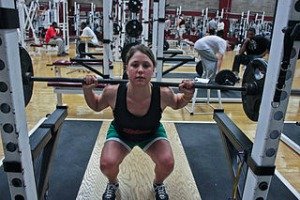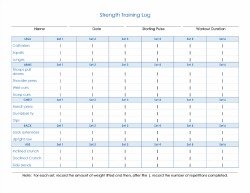Reps and Sets
Reps and sets give your weight training workouts structure and organization instead of randomly lifting any weight that feels right and in any amounts.
Most workouts or strength training plans are prescribed with a specific number of so many repetitions and sets of repetitions.
One movement, like for example, one squat is 1 rep. A set is 2 or more squats. Sometimes a fitness training plan will say to do so many exercises in a certain amount of time, like 60 seconds.
If you follow the way the sets divide up the exercises progressively, like sets of squats, then you can avoid the dreaded 'delayed onset muscle soreness' or DOMS, that comes with so many workouts that are done too much in too little time.
If you track the numbers of exercises in this way, you can progressively, and slowly, increase your sets or repetitions of the exercises.

Also, a time frame is needed in between your sets. It can be anywhere from 30 seconds to 2 minutes, depending on what you are trying to accomplish.
Different ways to set up your workouts
- To focus on building muscle, use heavier weights and keep the repetitions lower
- To focus just on strengthening the muscles generally, like toning, use a lighter weight and a higher number of reps.
- If your focus is on muscle endurance, lower your rest time to less than 30 seconds in between sets. Otherwise, keep a 60 second rest period there
- Keep one day of rest in between any strength training workout
Combinations of Reps (R) and Sets (S)
For building strength, high intensity workouts. These workouts are the best if you are solely trying to build intense strength. In this scenario you would use heavier weights - to judge this you can only squeeze out the last moves with great effort:
8 S x 3 R = 24 R
6 S x 4 R = 24 R
3 S X 5 R = 15 R
For building muscle - and strength - use the combos below:
5 S X 5 R = 25 R
4 S X 6 R = 24 R
3 S X 8 R = 24 R
The combinations below are best for building muscle endurance:
3 S X 10 R = 30 R
4 S X 10 R = 40 R
2 S X 12 R = 24 R
In the low intensity combinations below, you would use much lighter weights:
2S X 15 R = 30 R
2 S X 20 R = 40 R
It is important to keep track of your numbers in a fitness training log. This allows you to track your progress, keep tweaking your program and especially when you are trying to get stronger or build muscle, its important to be able to track how much you lifted last workout so you can know what to shoot for in the next.
Keep in mind to start out with lighter rather than heavier weights to prevent injury. You can always start light and progressively lift heavier, especially for us women who are looking to sculpt and tone our bodies, those looking to lower their body fat and lose weight.









